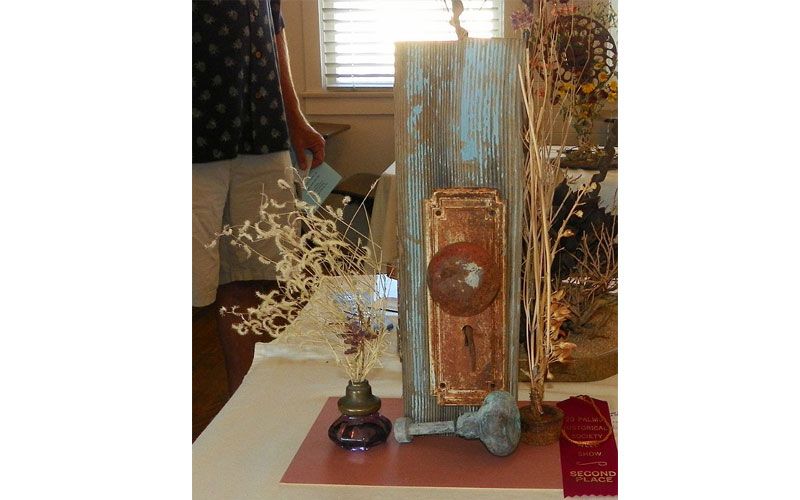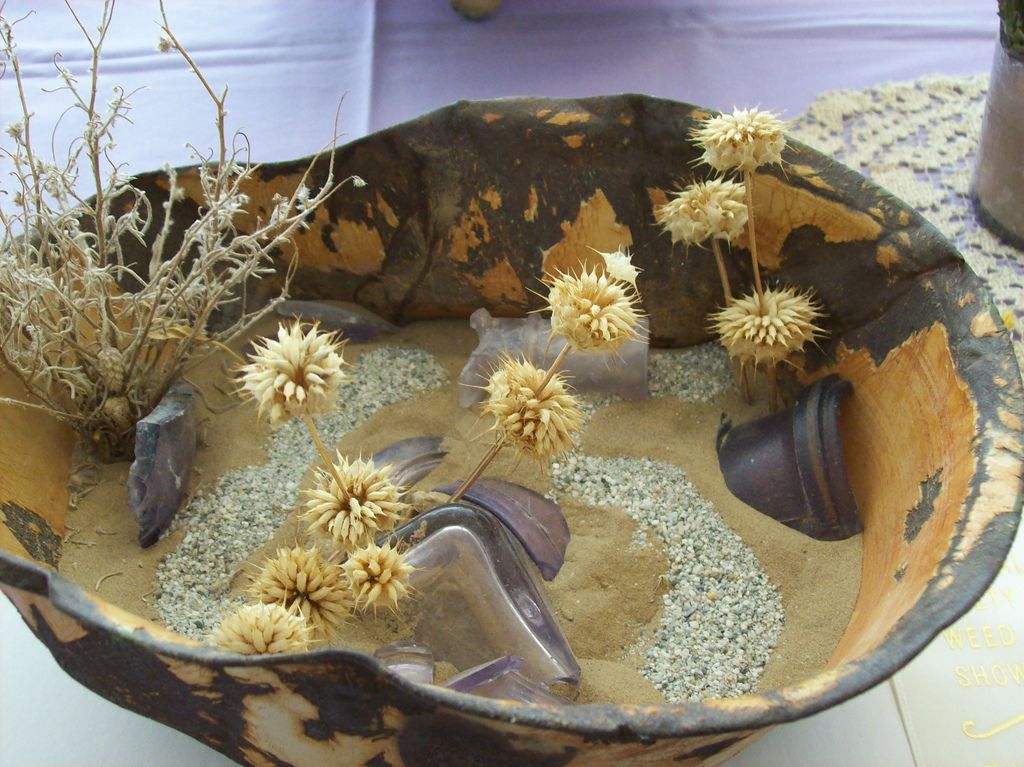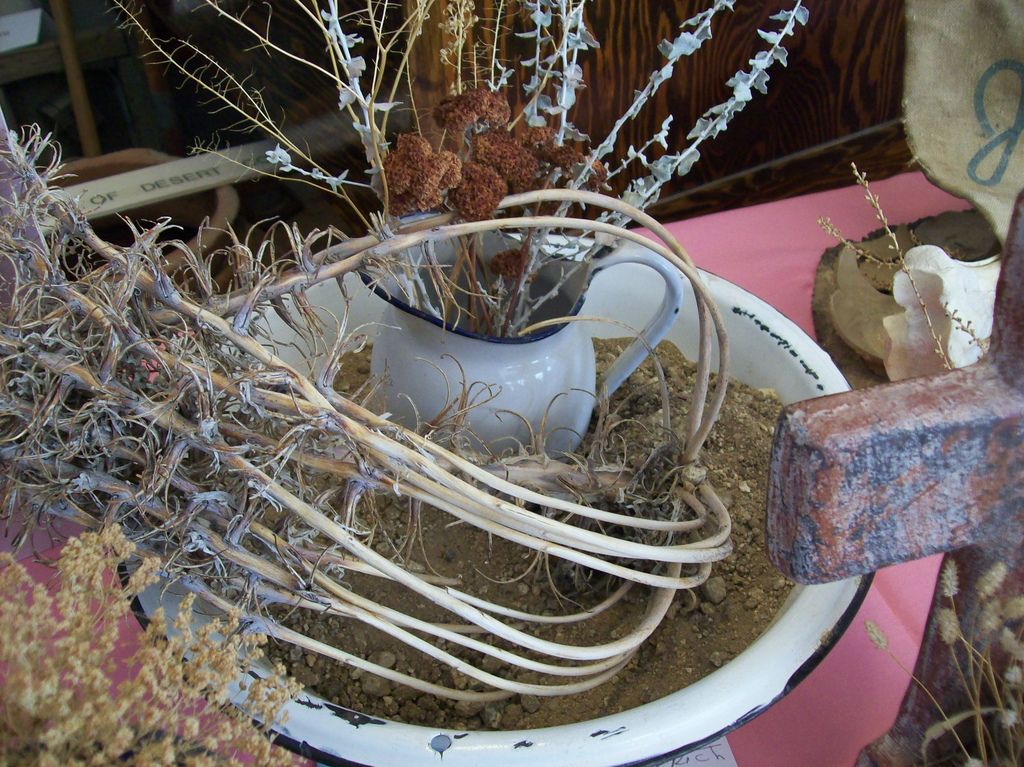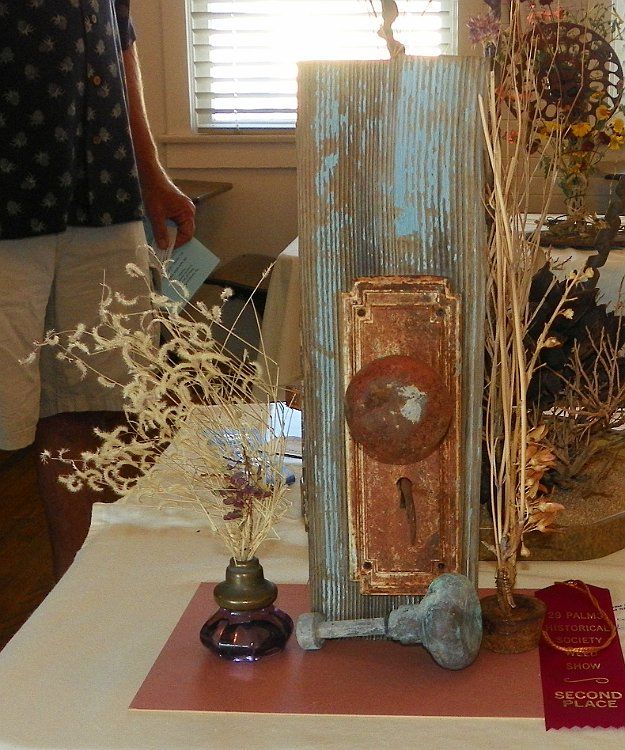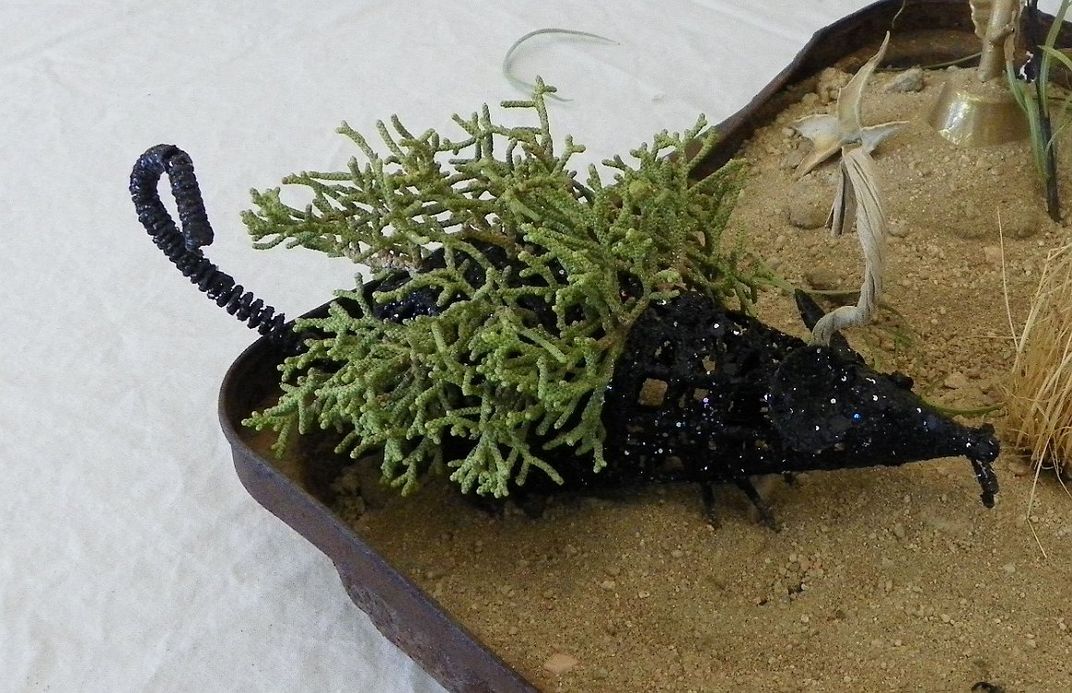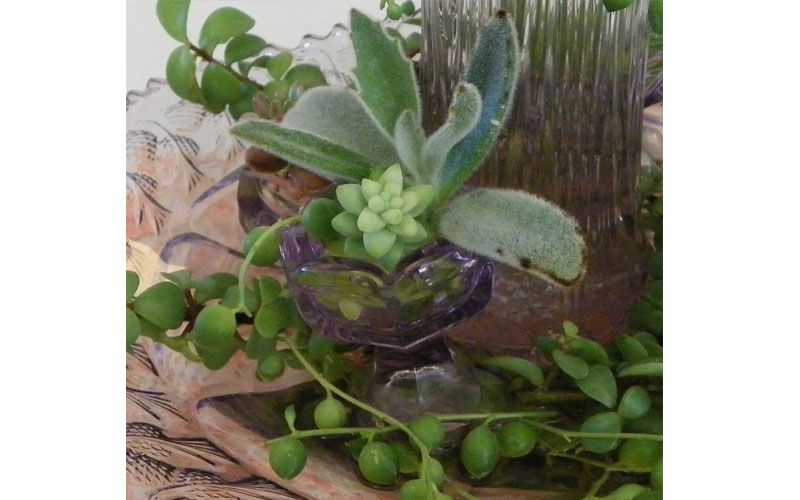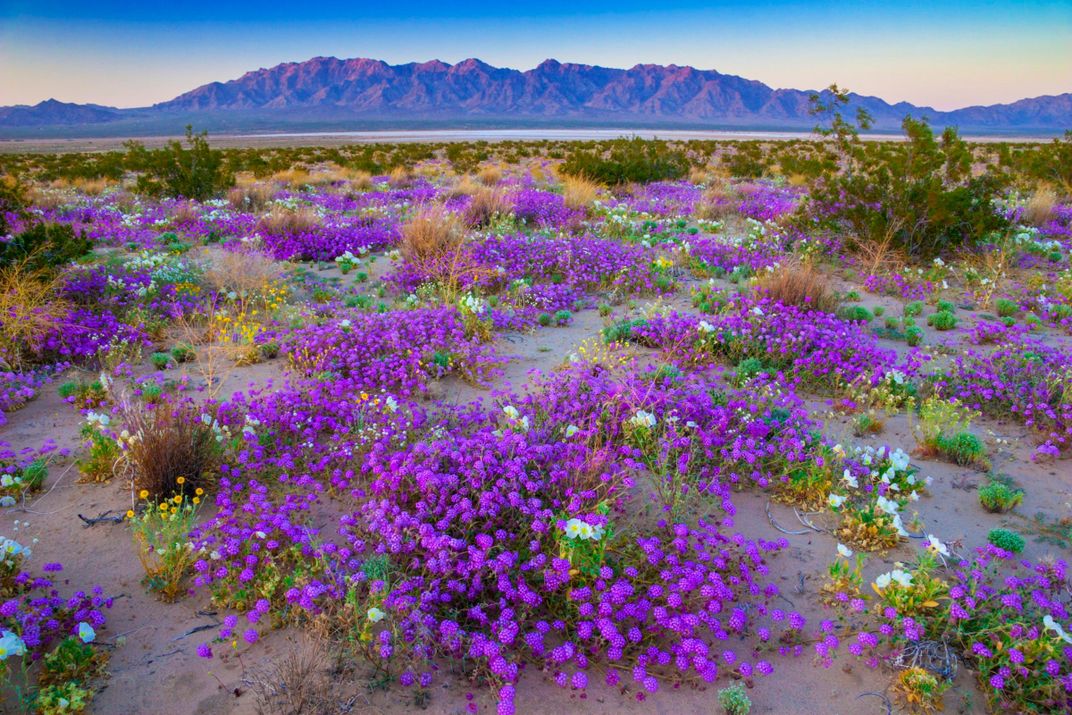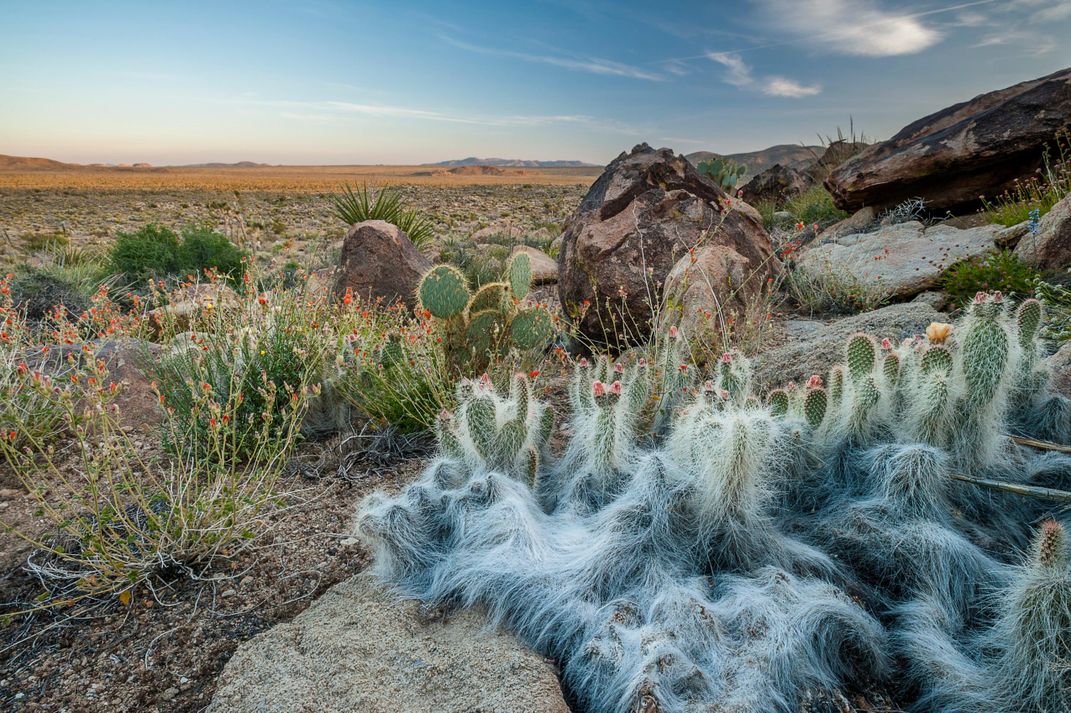At This Unique Flower Show, Weeds Are the Stars
The women of this small desert town have found beauty in getting in the weeds
It’s a bright blue October morning in the high desert town of Twentynine Palms, California, a scruffy outpost of barbershops, dive bars and pizza joints on the edge of the Mojave Desert wilderness. Located near the outskirts of Joshua Tree National Park, this is the kind of place where people take what they’ve got and transform it into something beautiful.
The surrounding landscape is dotted with homestead cabins, creosote bushes and spiny Joshua trees. The nearby Marine Corps Air Ground Combat Center, a sprawling 998 square miles of scrub and dirt, is larger than some small nations. Inside an old schoolhouse, locals brace for another type of combat, as preparations for a Weed Show throwdown commence.
Old wooden desks have been pushed to the side. People of all ages perch on folding chairs. On two long tables at the front of the room, Pat Rimmington and Marilyn Fernald display a collection of desert detritus: Weeds, weathered roof shingles, broken glass, rusted cans, tumbleweeds. One of America’s most unique events, the Twentynine Palms Weed Show, will take place in just a few weeks.
The Weed Show is like a flower show, but without the flowers. Instead of roses or orchids, there are weeds. Would-be weed show victors can enter their artistic, themed compositions of dried vegetation in 12 different categories (there’s one special category for fresh weeds). The creations are accessorized by rusty tools, rotting wood and whatever else competitors find around the desert. Except lizards.
“I know we’ve had sun-dried lizards in the Weed Show before,” Rimmington tells Smithsonian.com. “Yes, the lizards died of natural causes, and they didn’t smell. But some people said, ‘Ew,’ so we don’t want them this year.”
The Weed Show started in the 1930s, when wives of World War I veterans suffering from heart and lung ailments related to tuberculosis or mustard gas arrived in Twentynine Palms. The area was rugged, but it had a moderate elevation and clean, dry air, and the homesteaders eagerly carted their families out on two-rut roads. Though they didn’t have running water, indoor plumbing or electricity, the ladies wanted to retain some semblance of civilized society, so they formed the Women’s Club of 29 Palms and organized a monthly speaker series.
On a scorching July day in 1940, the new club hosted a special guest, acclaimed etching artist Mildred Bryant Brooks, who drove the 140 miles from Pasadena to Twentynine Palms on a pitted dirt road. Etiquette dictated that Brooks should receive fresh flowers upon her arrival, but since it was July in an isolated desert town, there were no fresh flowers to be found.
When the ladies apologized, legend has it that Brooks sweetly replied, “But why do you need fresh flowers when you have so many beautiful weeds?”
Thus, the Weed Show was born. And it’s grown like a – well, you know – ever since. Now in its 75th year and hosted by the historical society, this celebration of lowly plants is the oldest and possibly most charming tradition in the whole desert basin. It’s an event that unites the little town and ignites creativity too.
“Without the Weed Show, I never would’ve known I had an artistic side,” says the aptly named Cathy Snodgrass, who has competed for the past several years. “What I do is I look at the categories, and then I look at my junk. Then I let my imagination take over.”
The serious competitors come to the Weed Show Workshop, held one month before the main event, to trade tips, tricks and make sure their ideas adhere to the show’s ever-evolving rules. Like the rule about animals, for instance, which is why lizards are taboo. “No critters and no critter parts,” says Rimmington as she leads the workshop. “That means no bones. Sorry.”
Rimmington also warns against the use of sacred datura, a white, trumpet-shaped flower also known as Western Jimson Weed. “It gets all floppity by the end of the day,” she says. “And it’s poisonous.”
The toughest rule to adhere to might be the fact that only natural adhesives, like mud, sap and clay, can hold an entry together. This is done in homage to the original Women’s Club ladies, who didn’t have the benefit of hot glue or floral foam. At the workshop, when Marilyn Fernald reveals her trick for using half a raw potato at the base of her compositions, it draws appreciative ooohs from the crowd.
The hardcore “weeders,” as they’re known, have been known to hoard objects all year long for future Weed Show entries. That goes for Larry Bowden, who said his home is filled with dried plants, rusty metal bits, old glass bottles and cactus spines. “Everything is there for the Weed Show and the pursuit of that elusive blue ribbon,” he tells Smithsonian.com.
In a landscape where beauty is defined by ruggedness, where even the weakest living things are hardy, the Weed Show makes sense. It celebrates that which survives the desert. It’s a nod to the things that endure.
“The Weed Show is just like the desert,” Rimmington says. “You don’t see anything special until you start looking for it.”
The Weed Show is free and open to the public from 12 to 4 p.m. Nov. 7 and from 10 a.m. to 4 p.m. Nov. 8 at the Old Schoolhouse Museum, 6760 National Park Drive, Twentynine Palms, California.
Planning Your Next Trip?
Explore great travel deals
Smithsonian magazine participates in affiliate link advertising programs. If you purchase an item through these links, we receive a commission.
